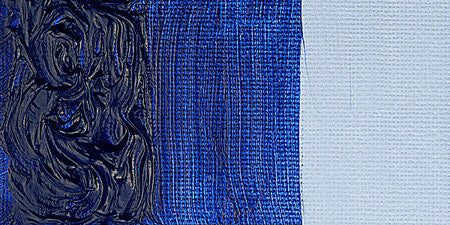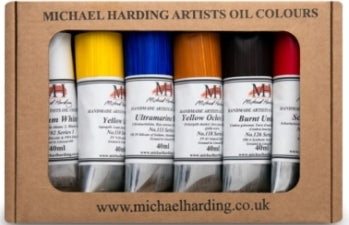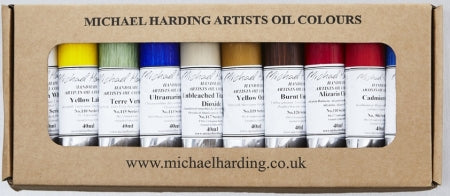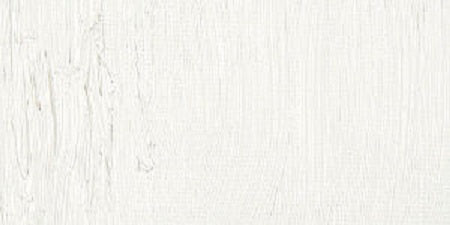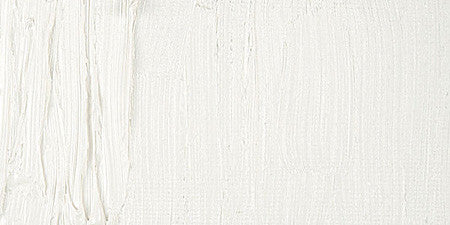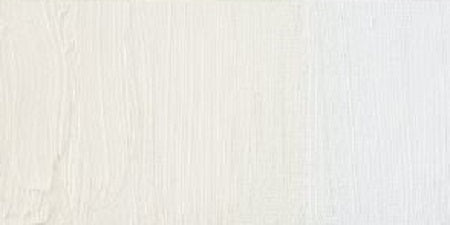Think blue skies, the depth and underlying warmth. A fantastically useful blue, I personally use this a lot mixed with transparent oxide red to create a wide range of greys, warm or cool depending on the quantities.
The discovery in the 1820’s, of a Sodium Sulphosilicate compound, which had appeared as a mysterious blue deposit on soda-ash furnaces, was a liberating moment for financially challenged artists everywhere. Up to then the only available version of this compound was the often unobtainable Lapis Lazuli ore, mined in Persia and China, a pigment so horrendously expensive that it was frequently included as part of an artist’s commission fee.
Ultramarine has a reasonable tint power (somewhat lessened by its transparency) which produces strong reddish blue hues, and makes wonderful violets with Magenta and the Red Lake colours. It is useful in greens and greys.
The only chemical weakness is a recorded sensitivity to atmospherically borne acids, which can bleach it out. It's one of the more difficult paints to make, as it forms an intractable runny syrup when first ground into oil, which has to be stabilized with filler.
Technical Overview
Pigment PB29
Fast Drying. Transparent. Excellent Lightfastness. Average Oil Content.

![[Best Oil Paints For Artists Online] - The Supreme Paint Company](http://www.supremepaint.co.uk/cdn/shop/products/oil-paint-ultramarine-blue-40ml-1_1024x1024.jpg?v=1548240271)
